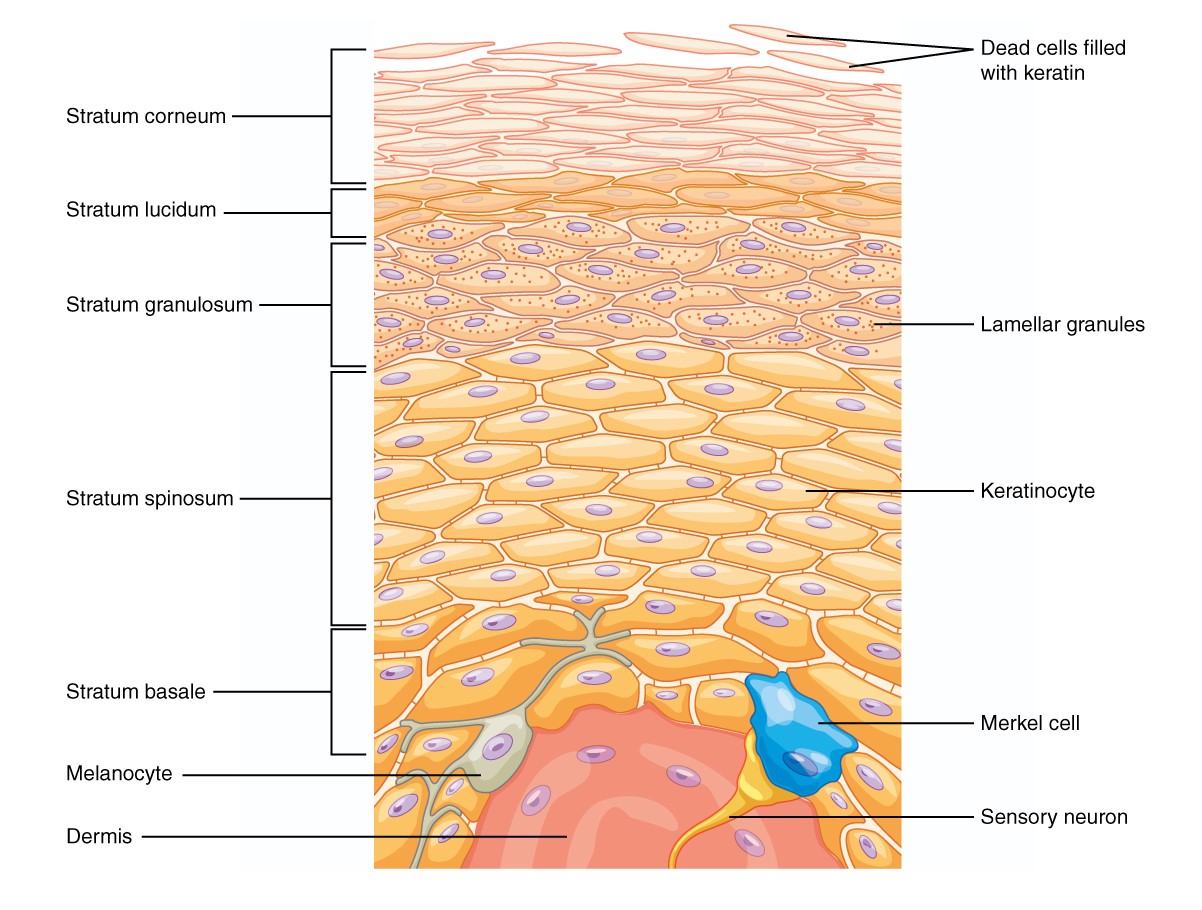Playlist
Show Playlist
Hide Playlist
Skin Blood Flow – Special Circulations
-
Slides SpecialCirculations VascularPhysiology.pdf
-
Download Lecture Overview
00:01 Now if we think about glabrous skin, remember glabrous skin is that of the palm, of the sole of the foot, the earlobe; here you have a tonic vasoconstriction that is activated so it will be almost always vasoconstricted. 00:17 It also uses norepinephrine and neuropeptide Y just like hairy or nonglabrous skin. 00:24 The big thing that’s different with glabrous skin is it has a special anatomical feature known as an arteriovenous anastomosis. 00:33 This shunt that goes directly from the arterial side of the circulation to the venous, bypasses the capillary bed and why that is important, it allows for high flows in these areas but yet the less release of heat. 00:49 So you may have seen this at certain times when the blood flow to let’s say your nose or your ears has gone up in the cold, and why that happens is you've shunted blood now through this arteriovenous anastomosis and therefore bypass the capillary beds and can still get more blood flow to the area without getting us as much problems with things like frostbite. 01:15 The interesting thing about dilation in these areas is that there is no active vasodilator in glabrous skin, so unlike cholinergic nerves that help hairy skin to vasodilate that is not present in glabrous skin. 01:33 Whole body thermal stressors are not the only way that skin blood flow increases. 01:40 In its response to local heating, there is an initial peak that is related to the axon reflex which involves the sensory nerve, the plateau phase which is maximal amount of the vasodilation involves nitric oxide. 01:57 In response to local cooling, this is a tonic vasoconstriction is mediated by alpha 2c adrenergic receptors. 02:07 These are specialized alpha adrenergic receptors that are translocated to the cell membrane and when in response to norepinephrine cause even a greater amount of vasoconstriction. 02:19 The reason why these are important responses is because sometimes you touched something that’s hot or touch something that is cold, this is the reason why you’re getting either an increase in blood flow or a decrease in blood flow, it’s not coming from the brain itself. 02:35 Now, there are also local responses in glabrous skin as well. 02:40 Local heating does not necessarily have a plateau that’s nitric oxide mediated and remember that glabrous skin also has its arteriovenous anastomosis. 02:51 These causes periodic opening and closing of these large vessels which makes oscillations in blood flow. 02:58 Local cooling is also pretty similar to nonglabrous skin. It does though contain some periodic oscillations in flow as well as a more sustained oscillation in flow known as the hunting reflex. 03:14 Also very important clinically is the triple response. 03:18 This is a local reflex that causes a wheal and flare. 03:23 Wheal and flares are often times used in things like allergy testing and are even responsible for things like mosquito bites. 03:32 So you get a particular puncture of the skin and it causes a little bit of inflammation. 03:39 The wheal is for fluid that leaks around the blood vessel. This is caused by a mast cells. 03:47 Mast cells release a substance called histamine and histamine makes capillaries leakier. 03:54 If a capillary is leakier, more fluid travels out of the capillary into the interstitial space. 04:02 The flare involves a vasodilation that is an increase in blood flow so that’s what makes that little area that got bit by the mosquito swell and become red.
About the Lecture
The lecture Skin Blood Flow – Special Circulations by Thad Wilson, PhD is from the course Vascular Physiology.
Included Quiz Questions
Which of the following substance is released by mast cells to cause capillaries to become leaky?
- Histamine
- Adrenaline
- Acetylcholine
- Warfarin
- Serotonin
What is the role of arteriovenous anastomoses in glabrous skin?
- They allow for a high flow of blood with less release of heat.
- They provide a high-resistance connection between arteries and veins.
- They transport dissolved substances to or from tissues.
- They remove excess fluid from body tissues.
- They allow for heat to be dissipated for the core when one is hot.
Which of the following statements is correct?
- The local heating response in glabrous skin does not have a plateau phase.
- The activation of alpha-2-adrenergic receptors elicits maximal vasodilation in non-glabrous skin.
- The plateau phase of the local heating response is maintained by the continuous opening and closing of the arteriovenous anastomoses.
- The local heating and cooling responses are regulated by the paraventricular nucleus of the hypothalamus.
- The local heating and cooling response of glabrous and non-glabrous skin are regulated through the same mechanisms.
Customer reviews
5,0 of 5 stars
| 5 Stars |
|
1 |
| 4 Stars |
|
0 |
| 3 Stars |
|
0 |
| 2 Stars |
|
0 |
| 1 Star |
|
0 |
thank you so much well done so helpful. thank you so much.




